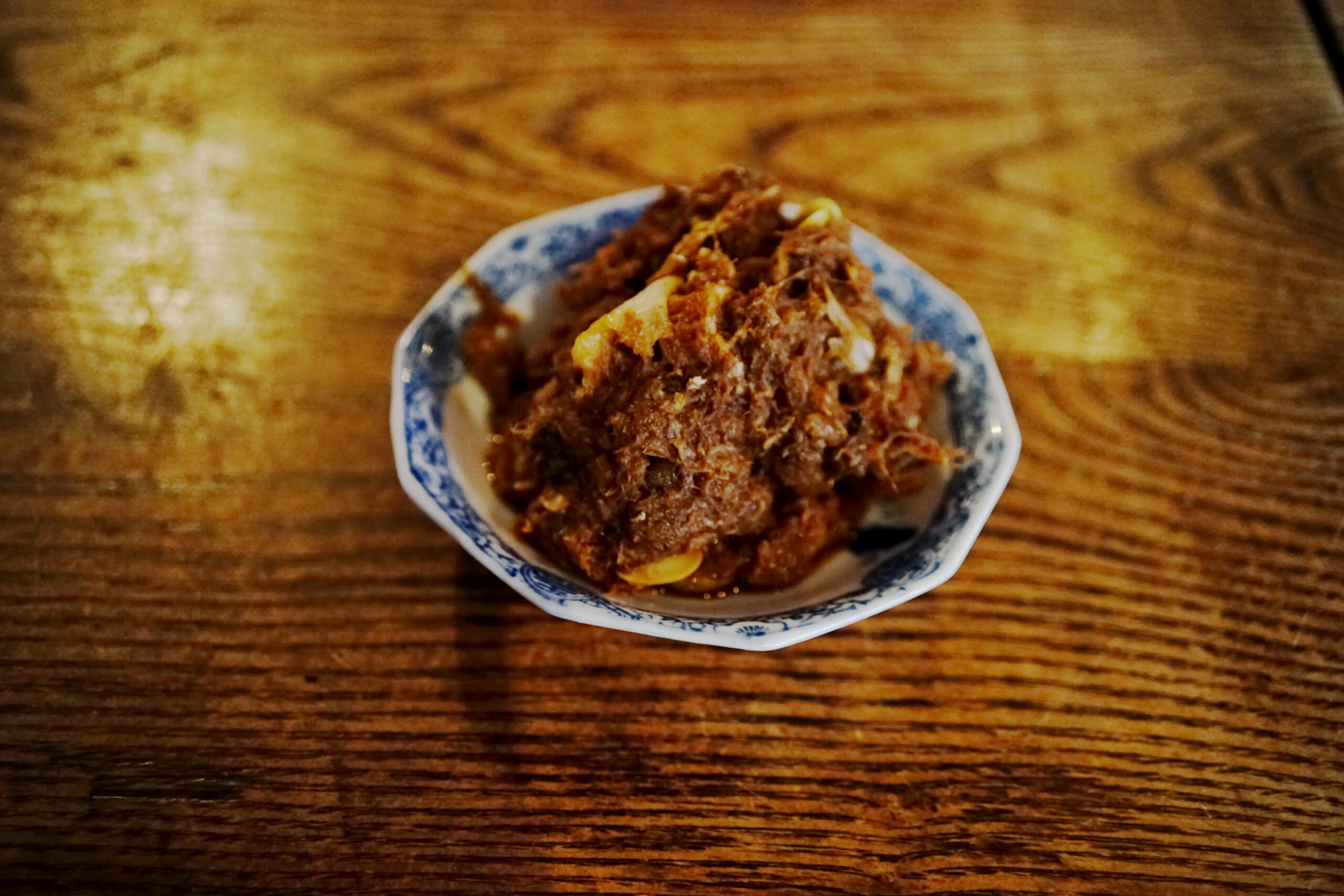マイナスをプラスに変える発酵錬金術
気仙沼周辺の漁師料理。メヌケという深海魚のアラと、酸っぱくなってしまった白菜の古漬け、酒粕を一緒に煮込んで調理する。ふつう食べられないものを組み合わせると、あら不思議、和製ブイヤベースと言いたくなるまろやかで滋味のある料理になる。2011年の震災以降、メヌケが水揚げされなくなりレシピ存続の危機に。のんびり酒場ニコルでは、唯一無二のこのユニークな味を守るための工夫を重ねている。
An alchemical fermentation process that converts the minus into plus.
Azara is a dish served among the fishers in and around Kesennuma. Bony parts of a deep ocean perch locally called menuke is stewed with excessively pickled sour Chinese cabbage and sake lees. Curiously enough, the combination of the ingredients, which are not usually good to eat, results in the smooth and mildly rich taste, which can be characterized as the “Japanese version of bouillabaisse”. Since the area around Kesennuma was struck hard by the Great East Japan Earthquake in 2011, menuke became a rarity and the recipe for azara is at the verge of being forgotten. One of the only restaurants that is still trying to preserve this recipe and pass on this uniquely tasteful local fishermen’s dish to the next generation is Nonbiri Sakaba Nicole.
どう作って食べるか / HOW TO MAKE & EAT
メヌケのアラと、白菜の古漬け、酒粕をメインに各種調味料をまぜてドロドロに煮込む。
★取材時は、メヌケのかわりにタラのアラを使ってアレンジした。
Stew menuke with bones together with well-pickled Chinese cabbage and sake lees, along with various seasoning agents until the mixture becomes like a jelly in thick soup.
★When I visited the restaurant that served azara, the chef had arranged the dish with cod instead of menuke.
おかずとして食べる。
Eat as a side dish.
▶食べられている地域 / Regions where it is eaten
気仙沼一帯
Around Kesennuma
▶微生物の種類 / Types of microorganisms
酵母(酒粕)、乳酸菌類(白菜の古漬け)
Yeast (sake lees), lactic acid bacteria (well-pickled Chinese cabbage)
